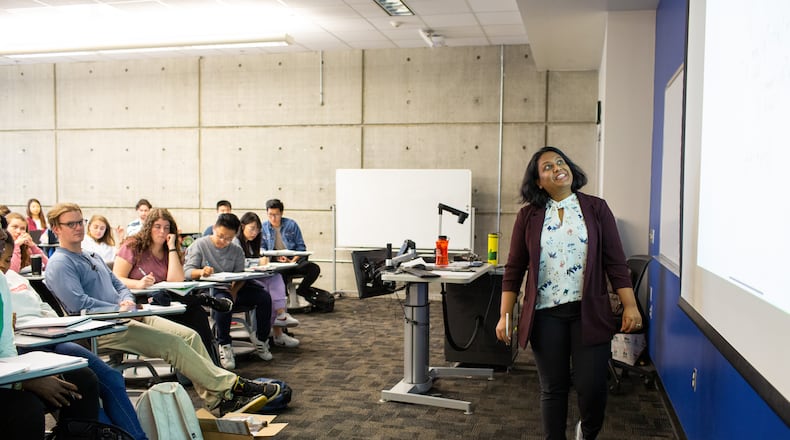Furloughs are coming to Georgia universities and colleges as state leaders respond to the economic wreckage of the COVID-19 pandemic.
In a guest piece, three academics suggest which campus staff should be furloughed.
And it’s not the folks in the front of classrooms.
Matthew J. Mayhew is the William Ray and Marie Adamson Flesher professor of educational administration at Ohio State University. Gregory C. Wolniak is associate professor of higher education at the University of Georgia. Kevin Singer is a doctoral student in higher education at North Carolina State University.
Here is their piece:
By Matthew Mayhew, Greg Wolniak and Kevin Singer
As America's universities begin to furlough employees and cut salaries as means for coping with the economic impacts of COVID-19, it is not always clear how universities are making these difficult decisions.
As authors of the book "How College Affects Students" – the most recent comprehensive synthesis of a decade's-worth of findings on higher education -- we believe it is time to invoke some empirically based evidence to send this message to colleges: If you're going to furlough and cut salaries, it should be administrators, not educators.
Our review of roughly 1,800 rigorous, peer-reviewed studies led us to conclude that ultimately, quality instruction and student learning is the component of higher education that should be protected at all costs.
Why? Because these are the most proven drivers to students actually completing their degrees. Paying higher salaries to executives and administrators who don't teach does not help students learn.
These are not easy decisions and should be made with care. Administrators, essential or non-essential, are valued employees. To that end, with our research in mind we now offer some suggestions for decision-makers to consider.
(1) When considering cuts to administration, do not treat all positions equally.
Time at work -- typically dictating salary level -- differs based on the position. It can wax and wane depending on student rhythms that semesters bring. For example, administrators who serve as student liaisons for academic programs may not experience much student traffic over the summer. Many faculty are on a 9-month pay schedule; why not move some 12-month administrators like this academic liaison to the same schedule?
(2) For some administrators, consider repurposing endowment funds to fund their salaries.
Northwestern University did just that after forecasting a $90 million budget shortfall next year. If administrators must be furloughed, it may be best to cut positions funded by endowment interest. After all, that interest might be compromised if there have already been unexpected dips into the endowment. Some endowments are highly restricted, requiring some negotiating. Schools that draw endowment funds for student assistance might use their CARES funds for that purpose instead.
(3) Do not adapt a one-size-fits-all approach to furlough practice.
Furloughing will put some families in extremely compromised positions, others not so much. Consider the enormous salaries of some administrators -- presidents and coaches come to mind – when discussing furloughs or salary cuts.
(4) Consider trade-offs, rather than zero-sum furloughs.
Might a furloughed employee or their family members take classes for free? Many institutions offer tuition discounting for employees already. Given the time freed up from furlough practice, offer this as a way of offsetting the disruption it brings.
(5) Stop construction and renovation projects in the early stages of development.
It goes without saying that building physical spaces in the midst of furloughs and salary cuts would be unsettling for most members of the campus community.
(6) Most importantly, essentialize the work of teachers and the staff who support them.
In a matter of weeks, many college teachers were able to migrate their teaching online. Though there were transitional hiccups, the fact that this happened so quickly speaks to a level of preparedness many other industry sectors would likely envy. It also points to the faculty as essential workers in delivering on higher education's promise to educate students.
Conclusion
Assuming student learning is the ultimate goal of higher education, we believe there has been a lack of attention on the empirical evidence when considering the financial decisions institutions are making in light of COVID-19. Of course, the above list is not exhaustive and is likely overly-trite, given the complexities each institution brings to the conversation about furloughs and cuts.
That said, it is imperative to use research as a guide to inform decision-making, especially when so much is at stake.
About the Author
The Latest
Featured



